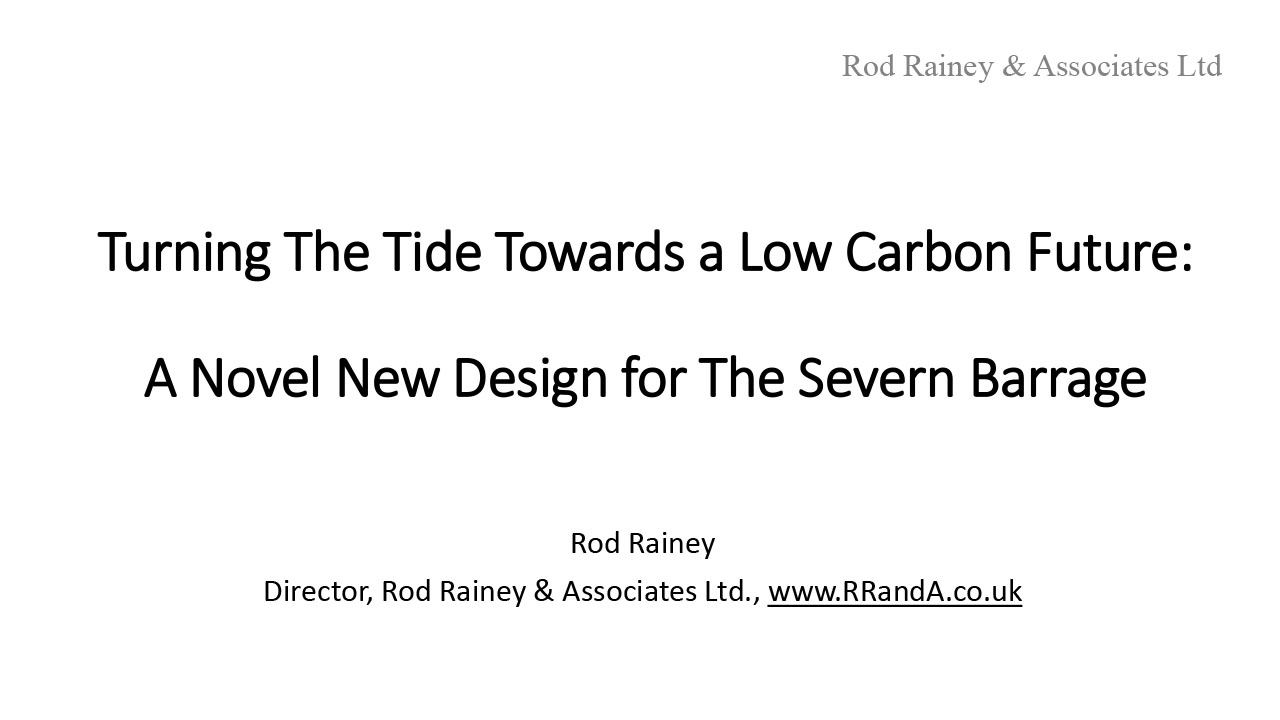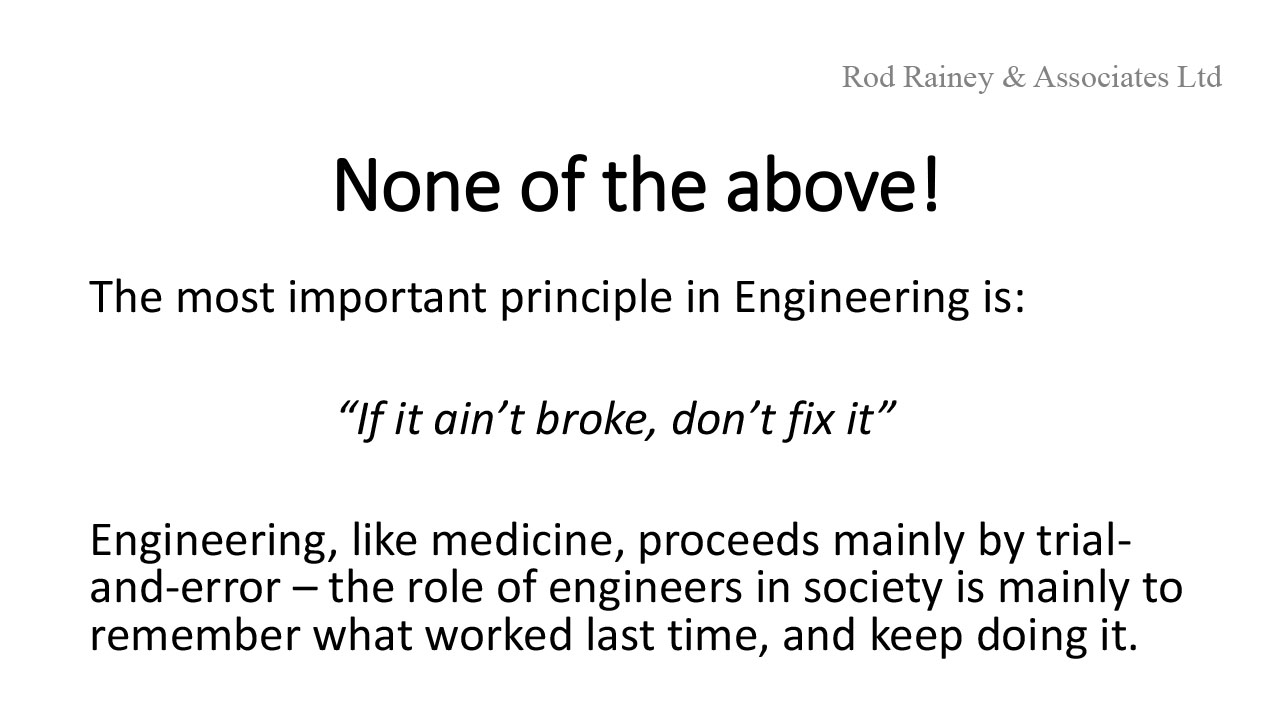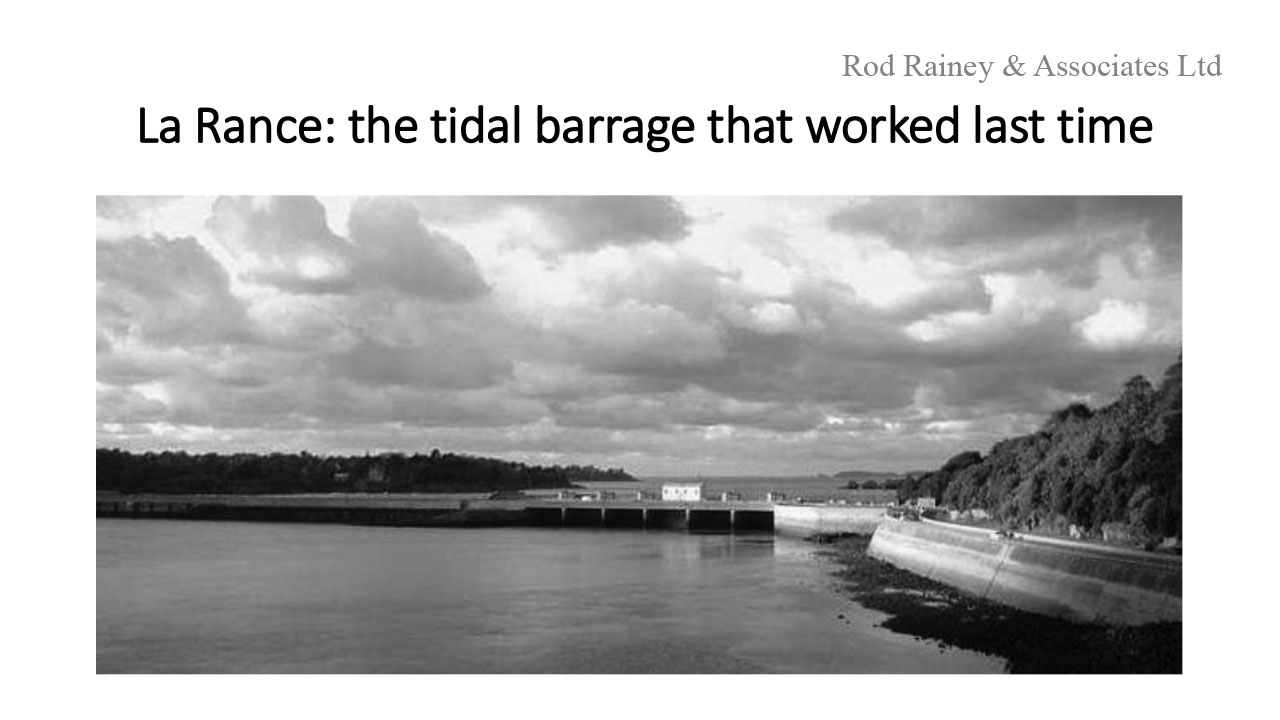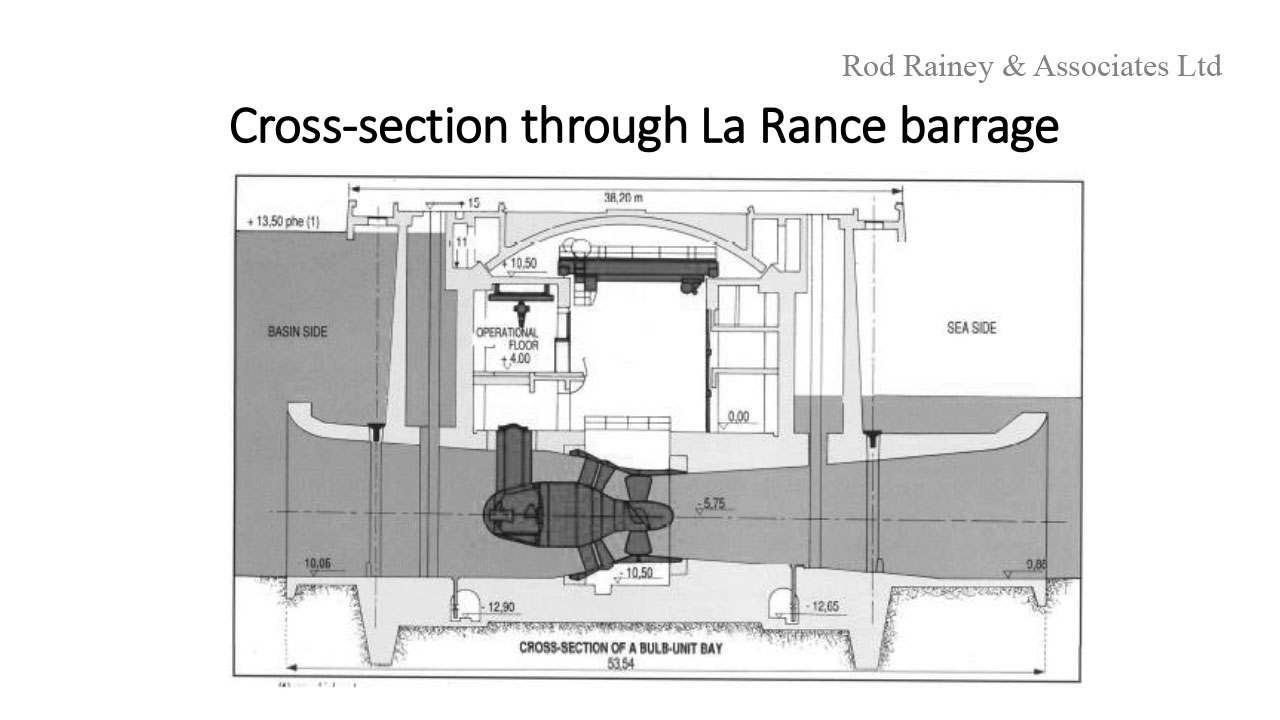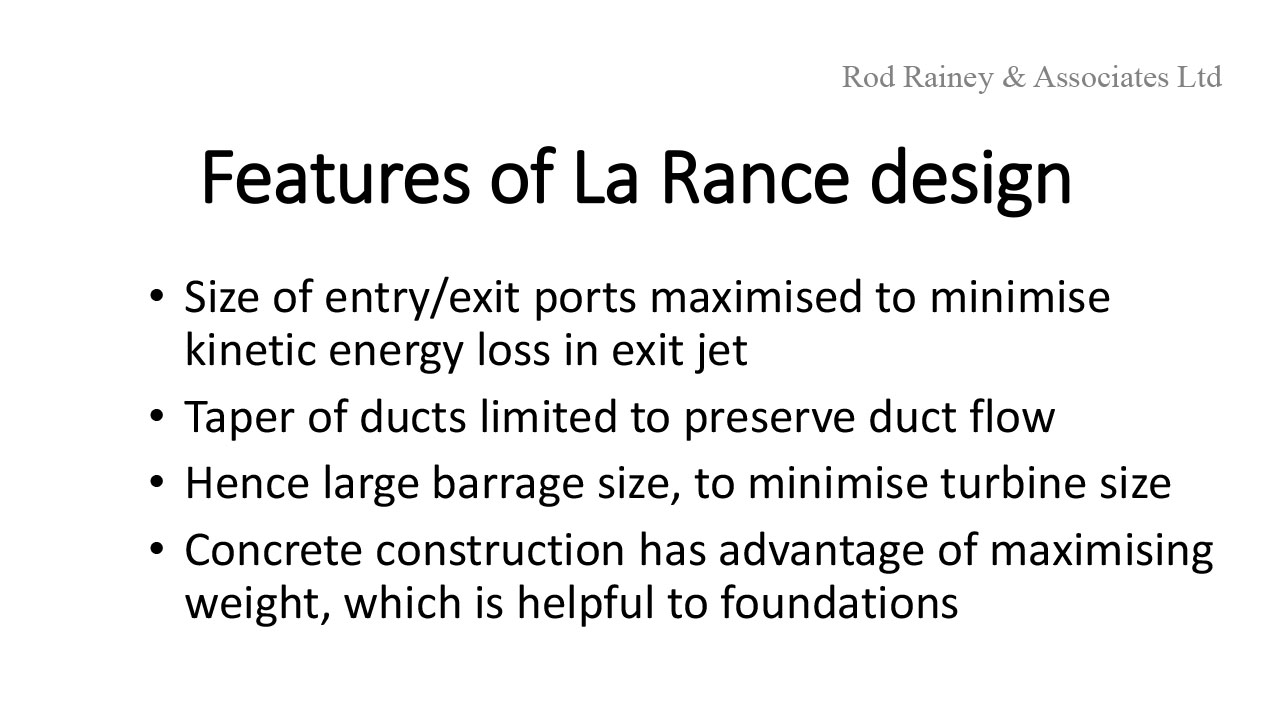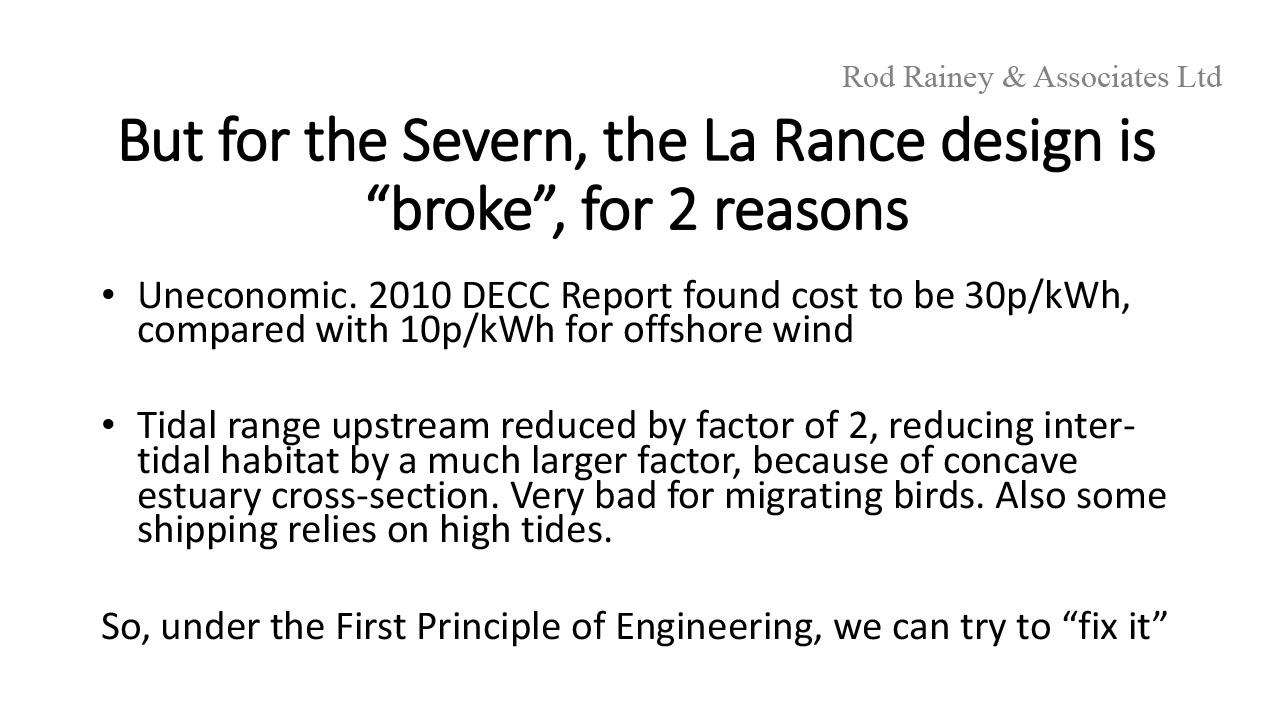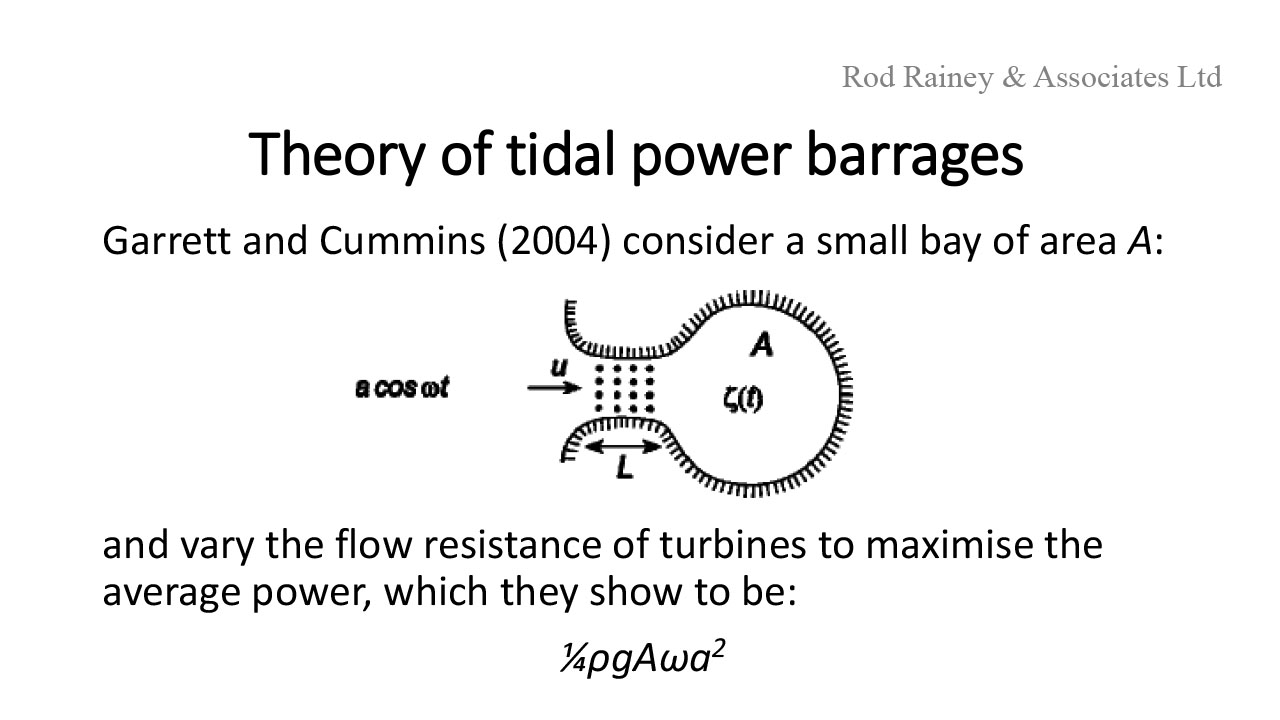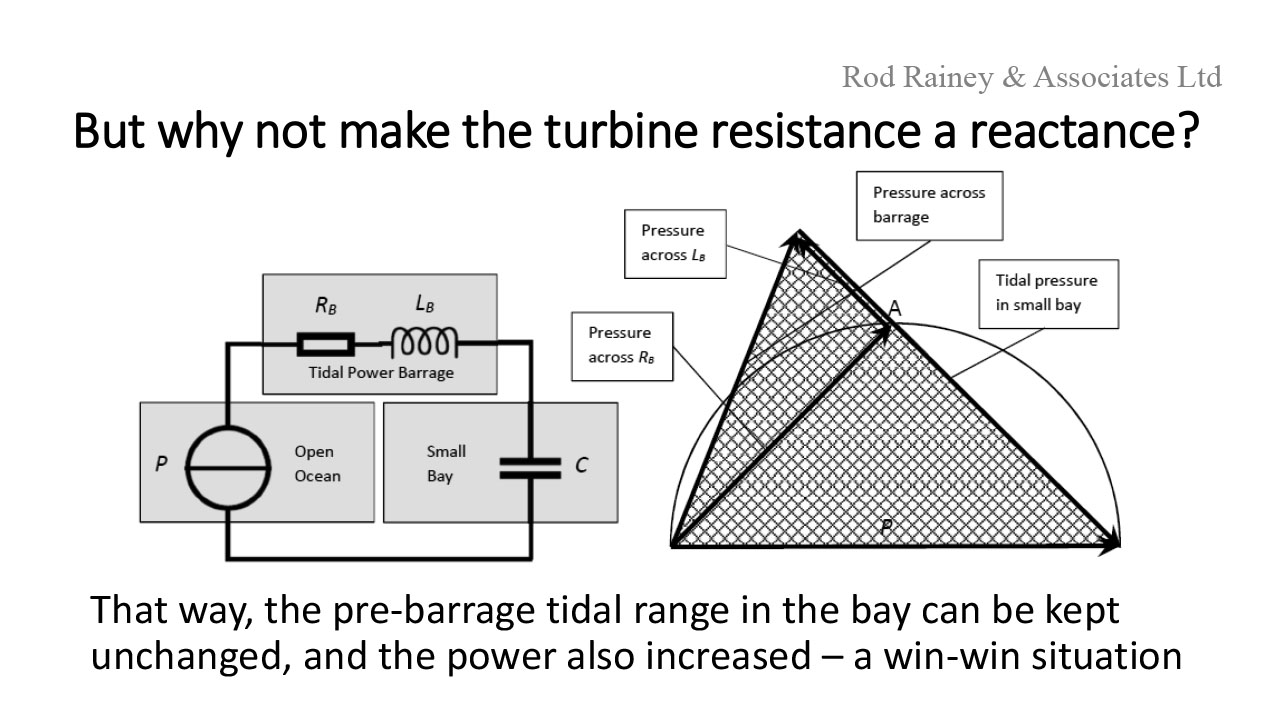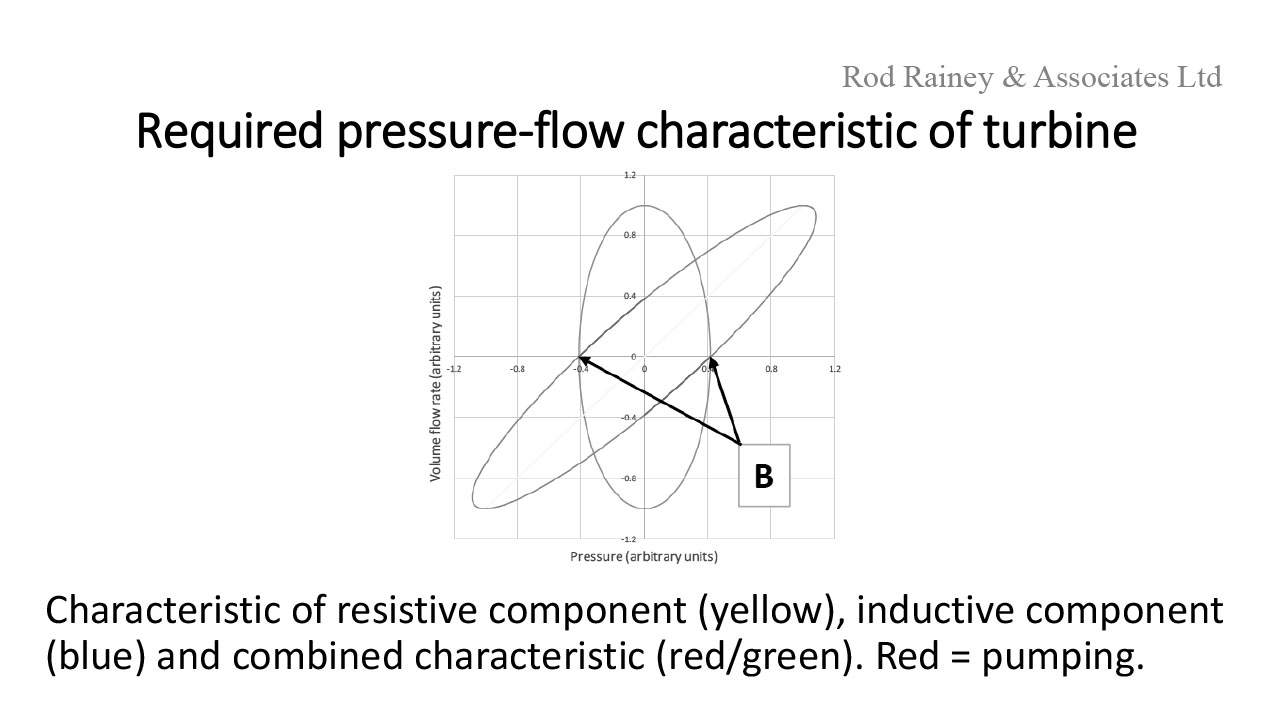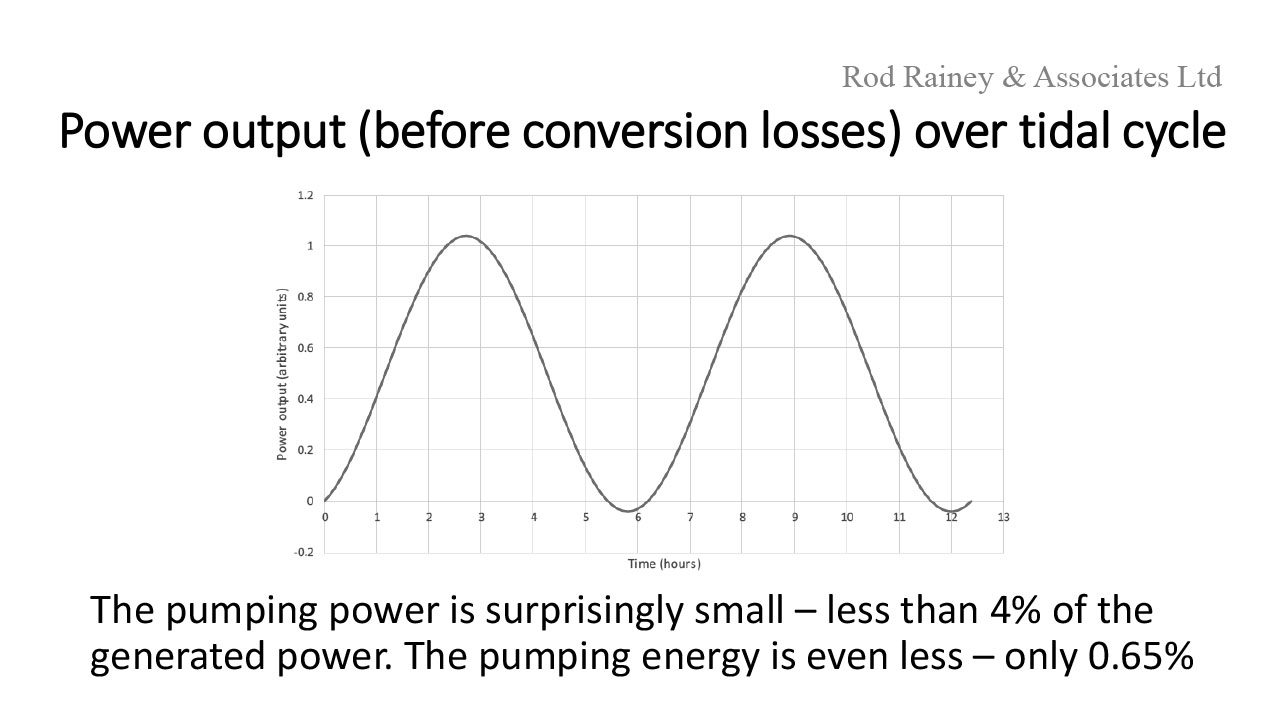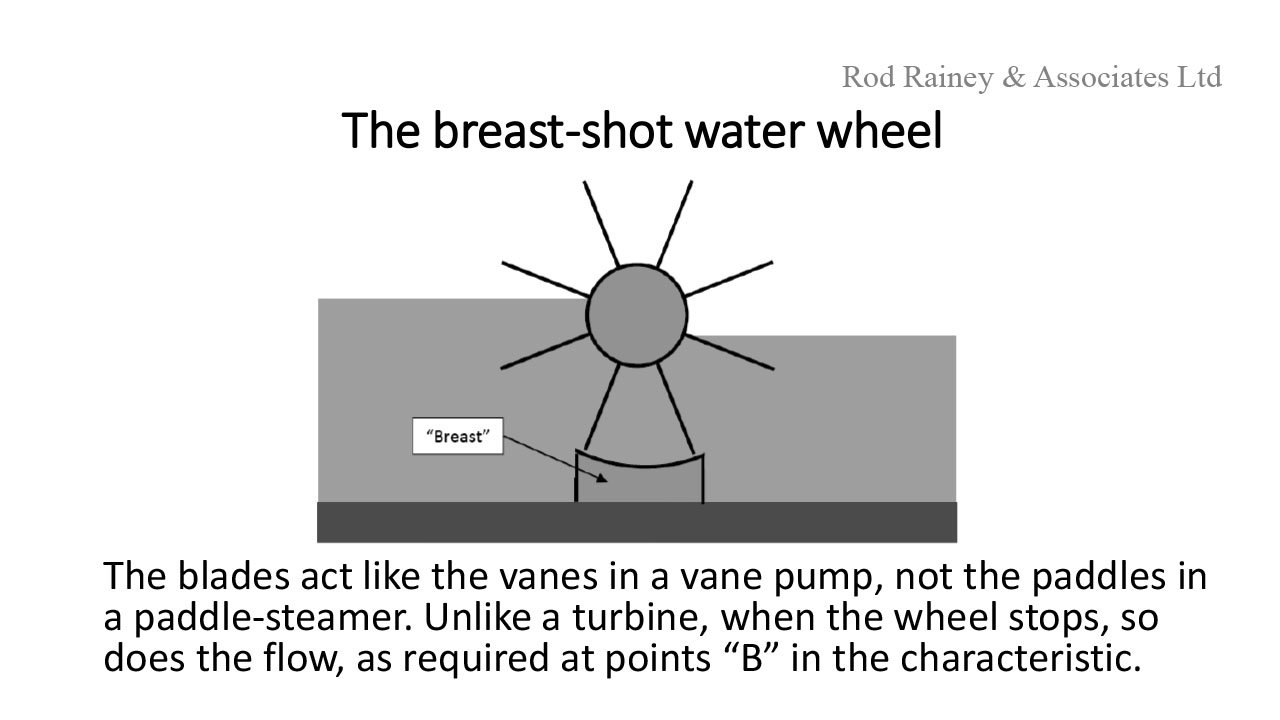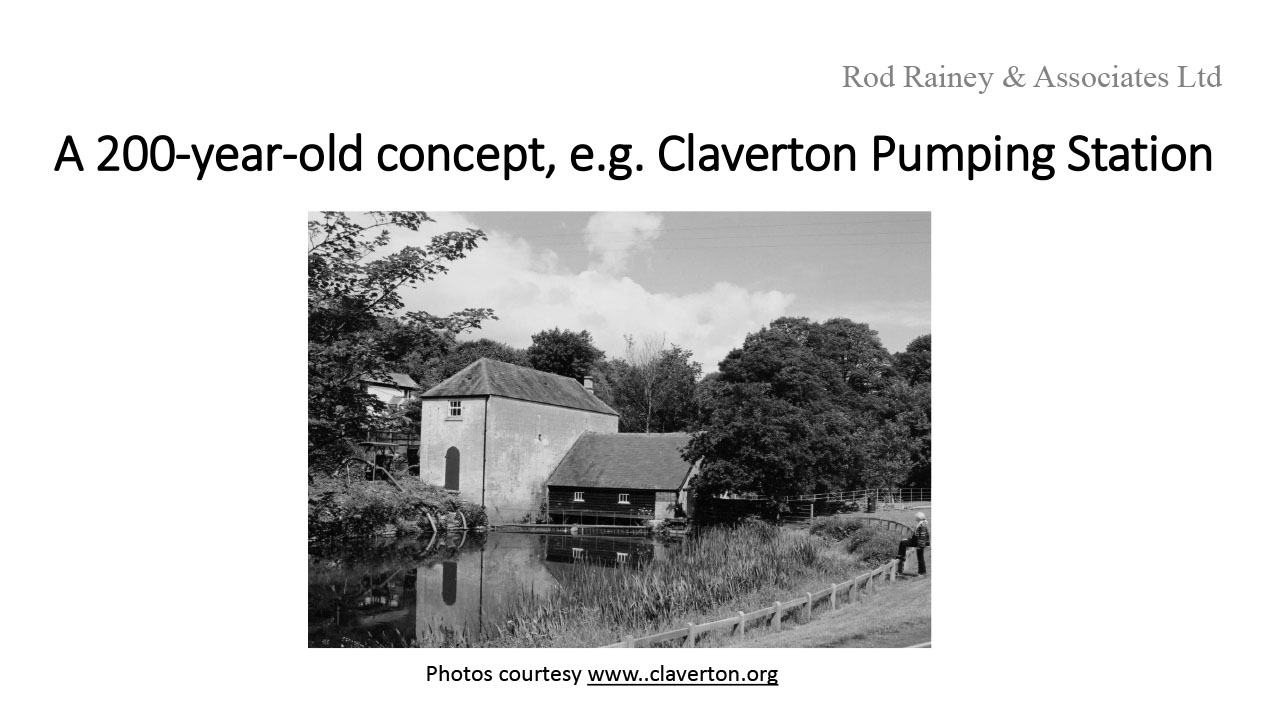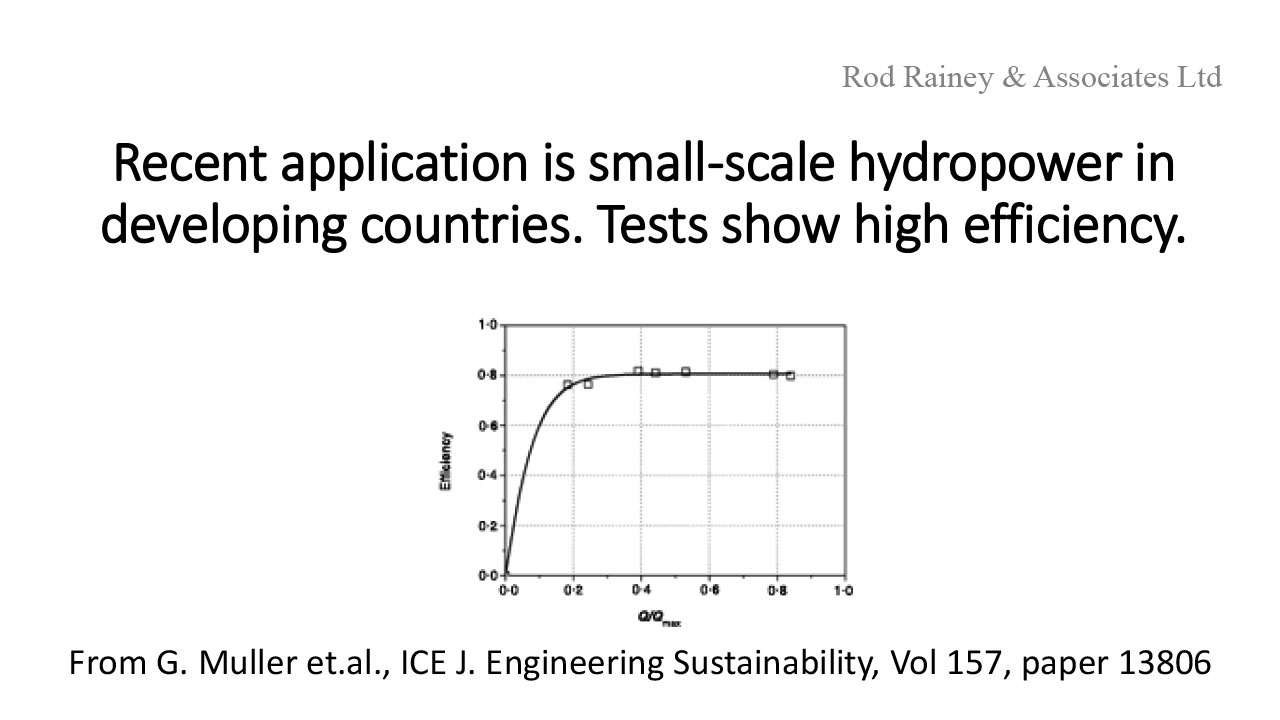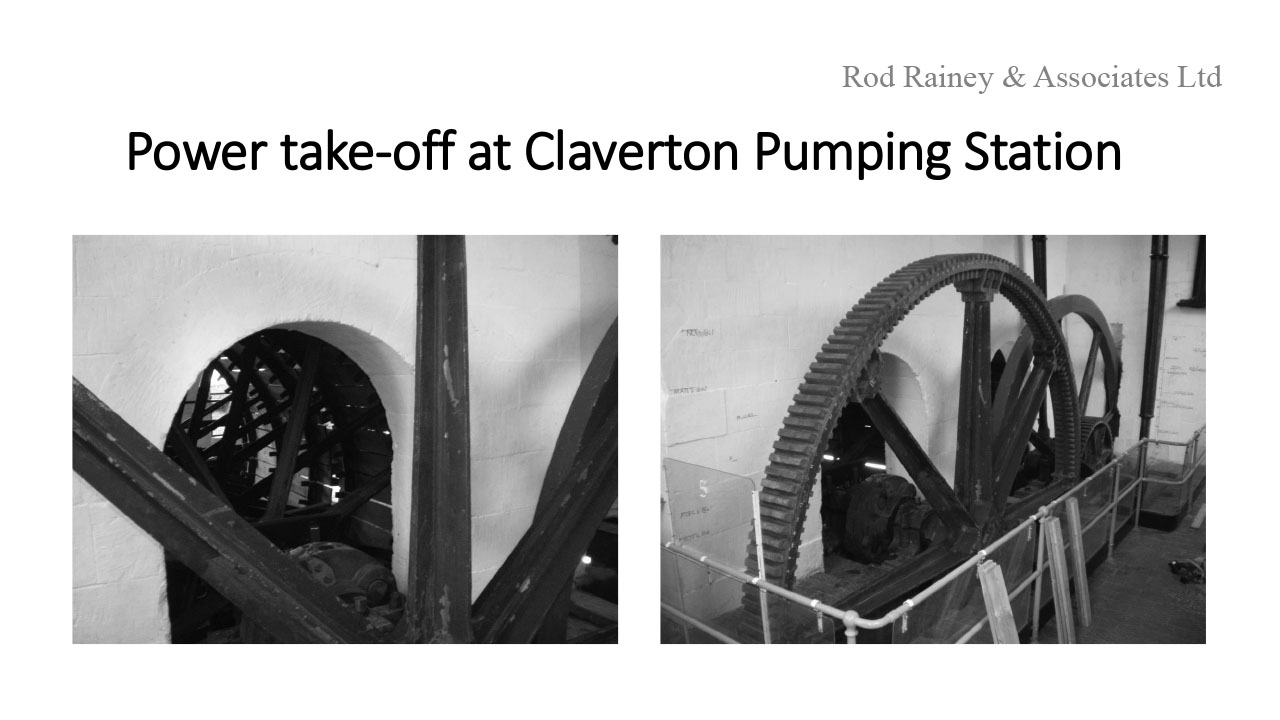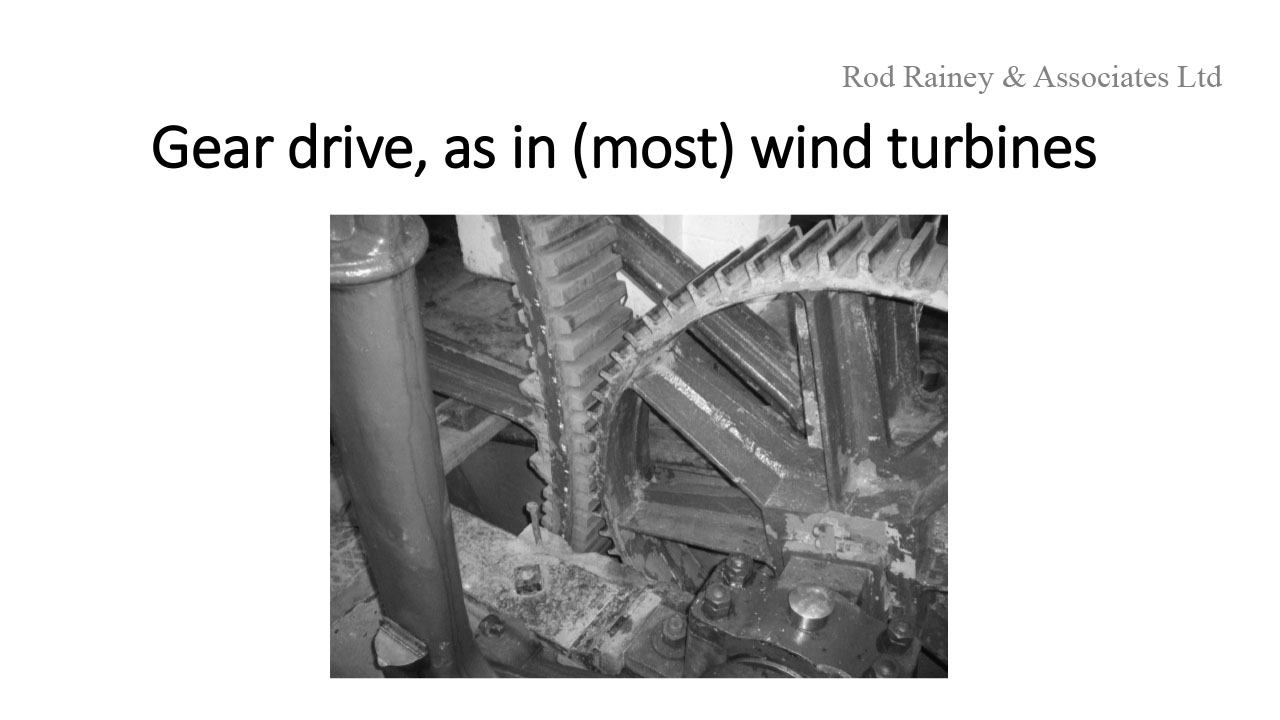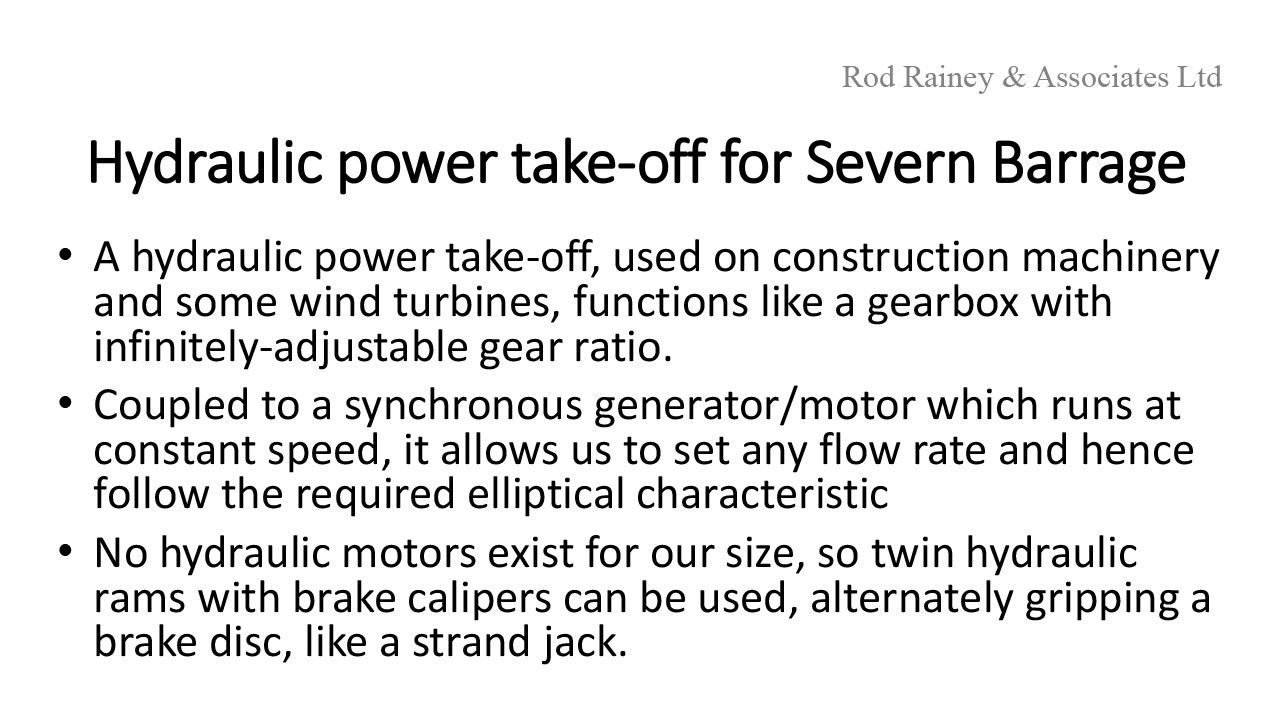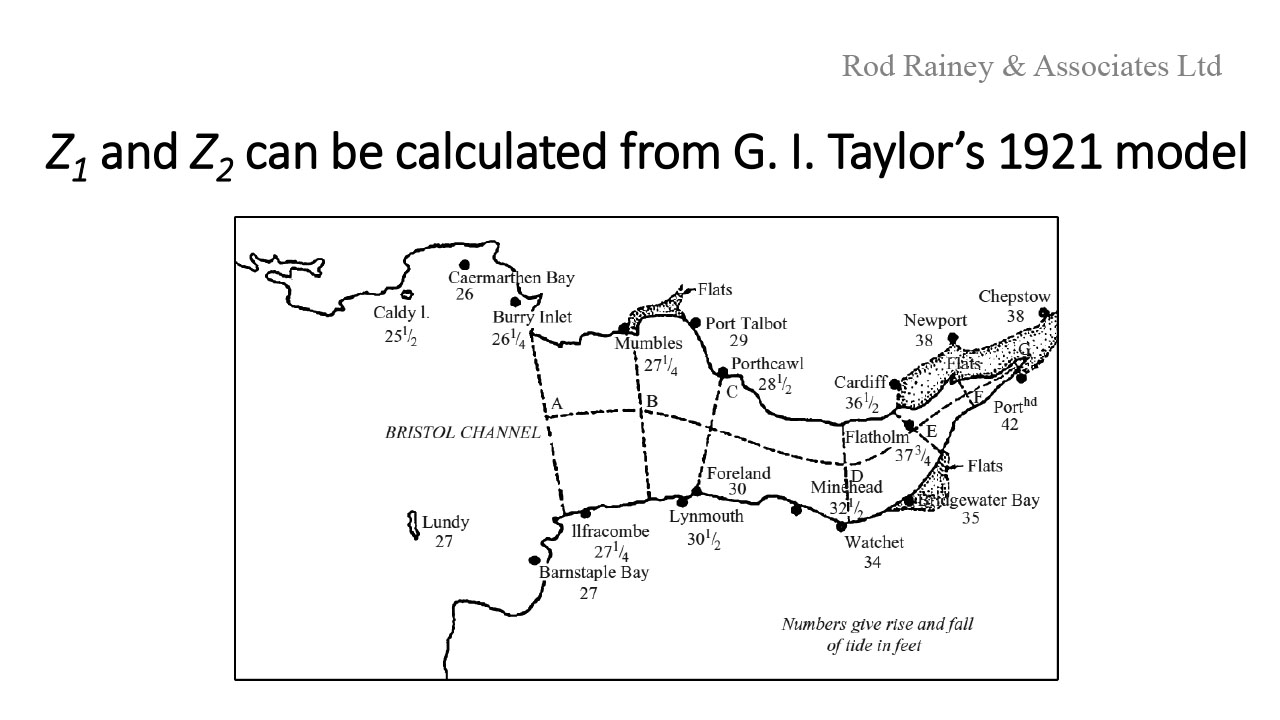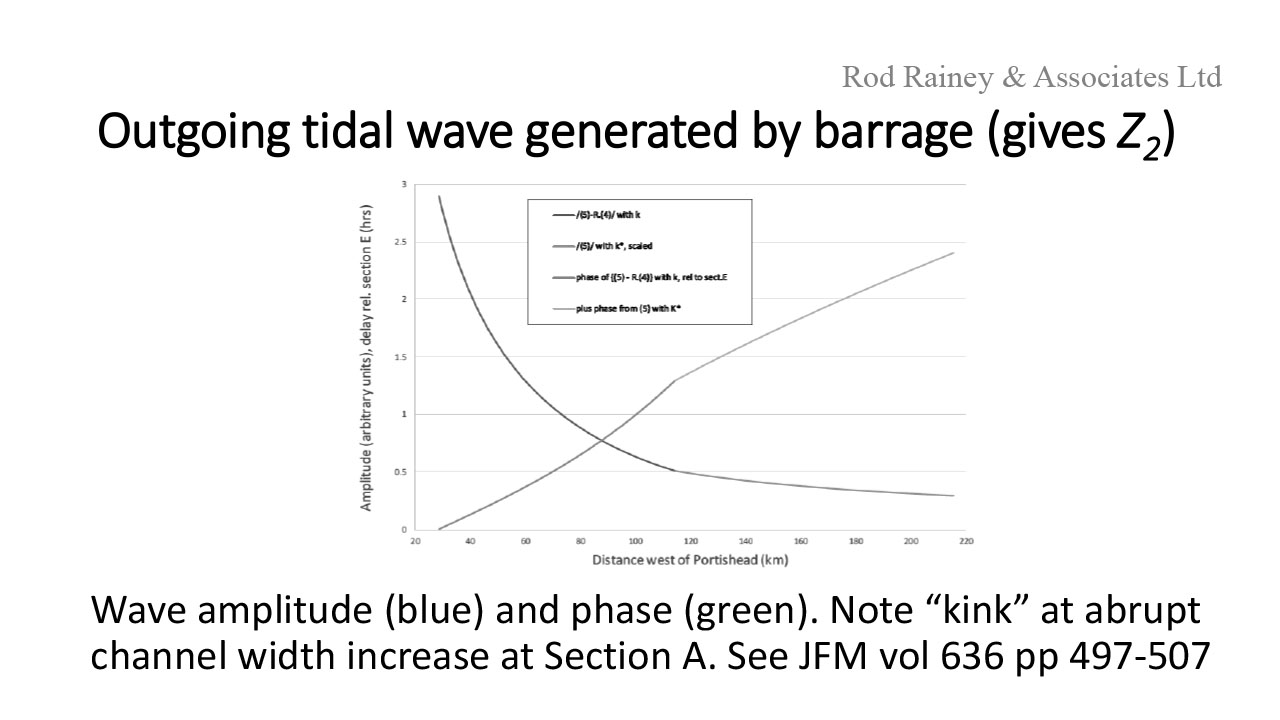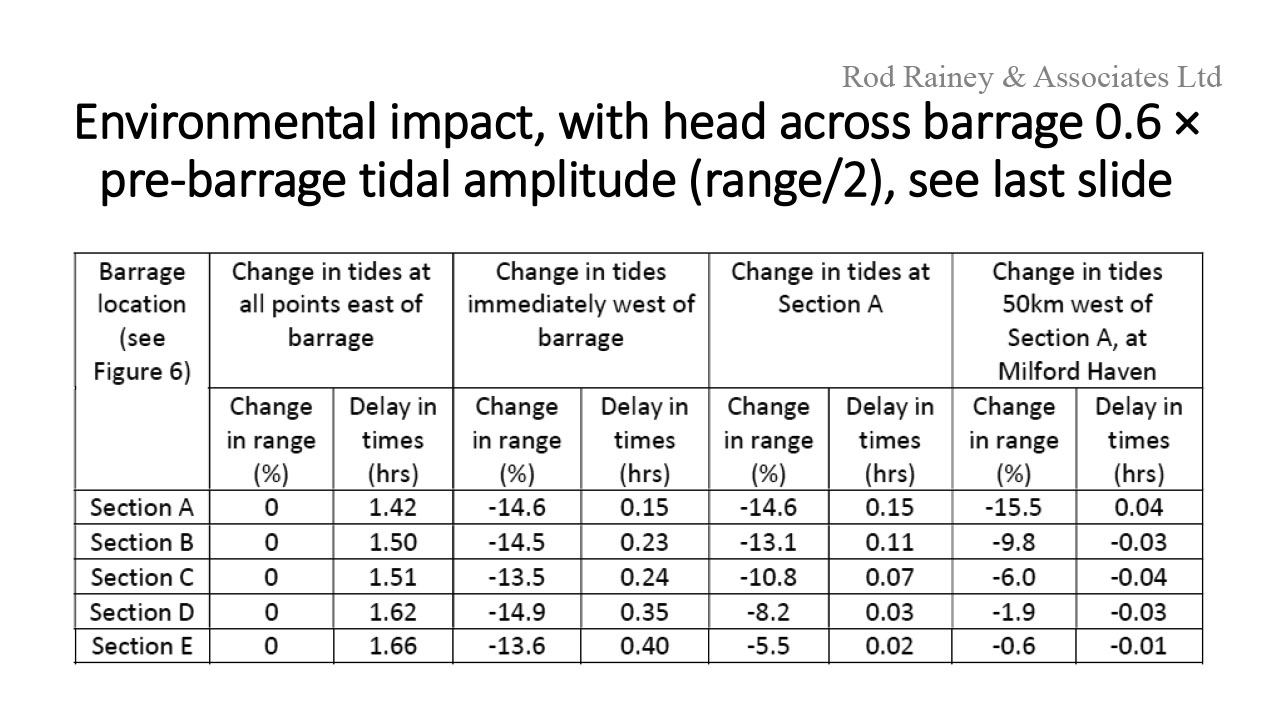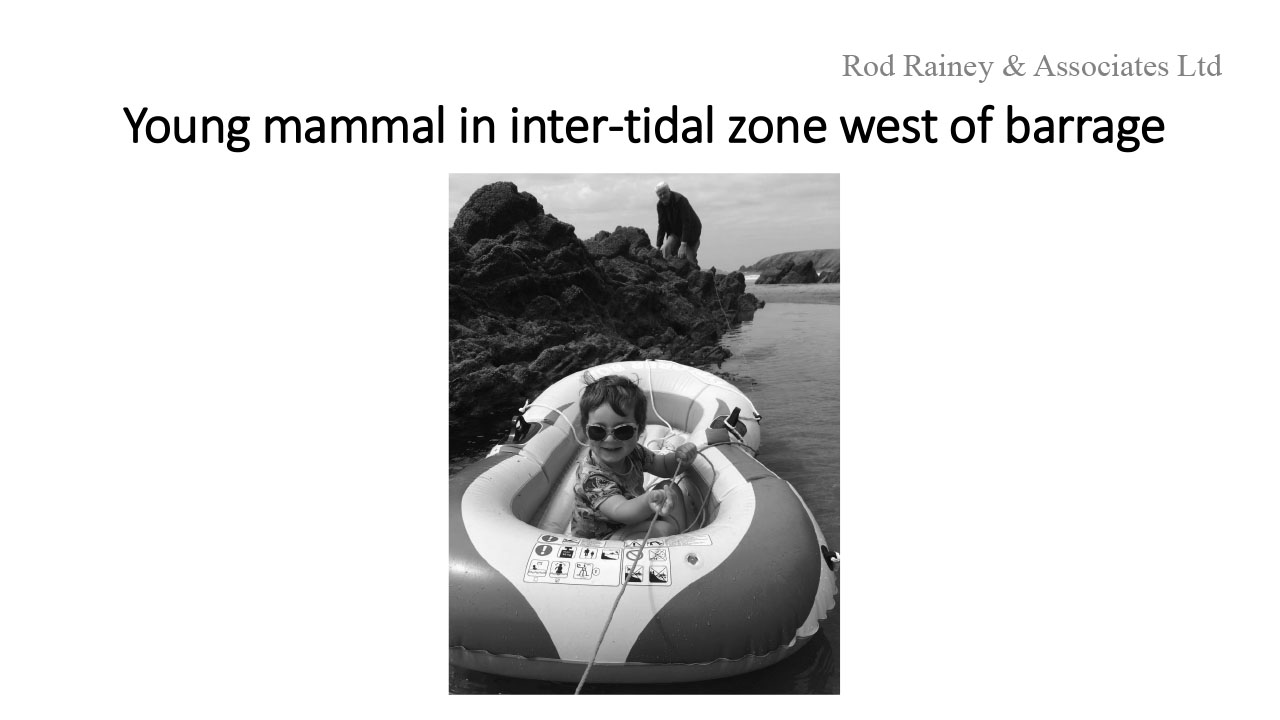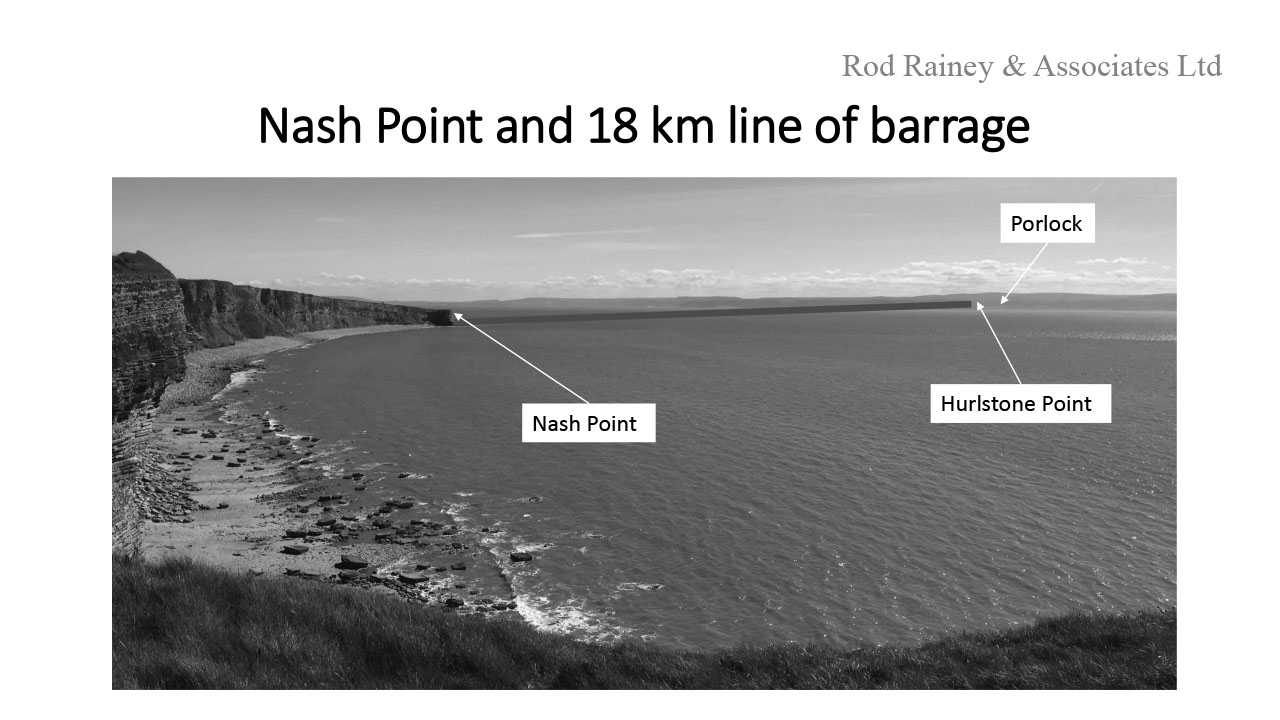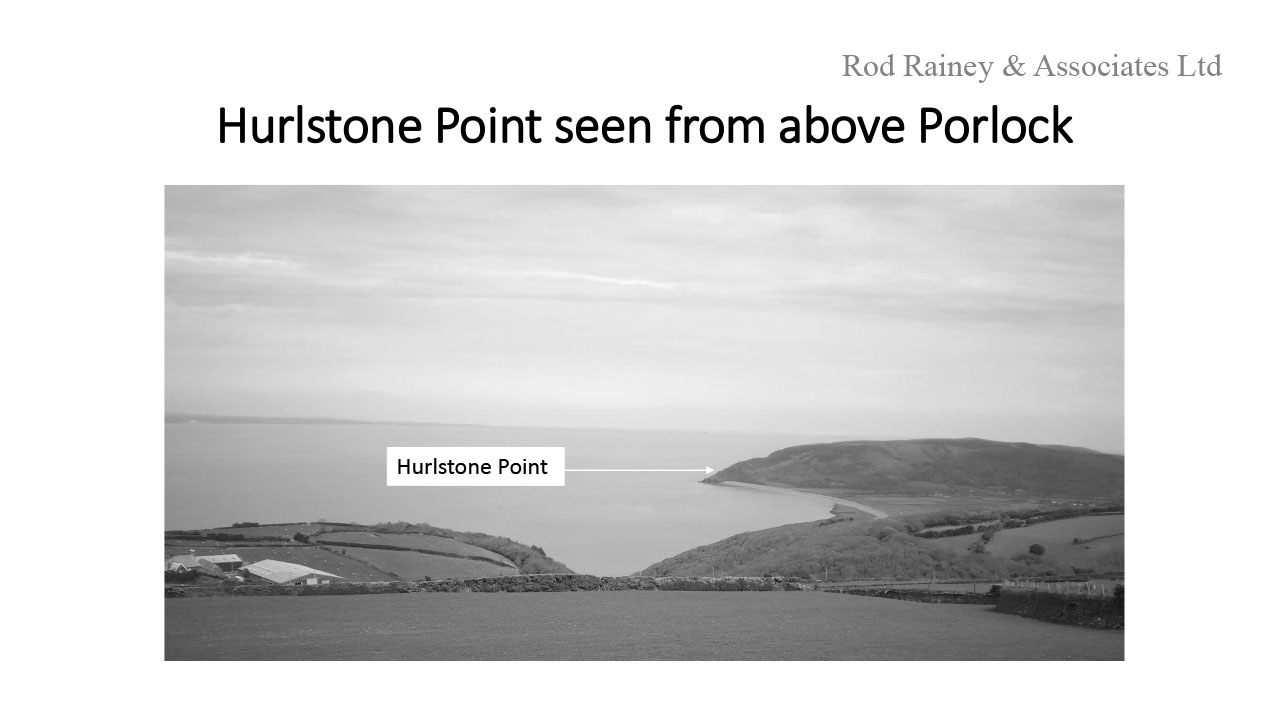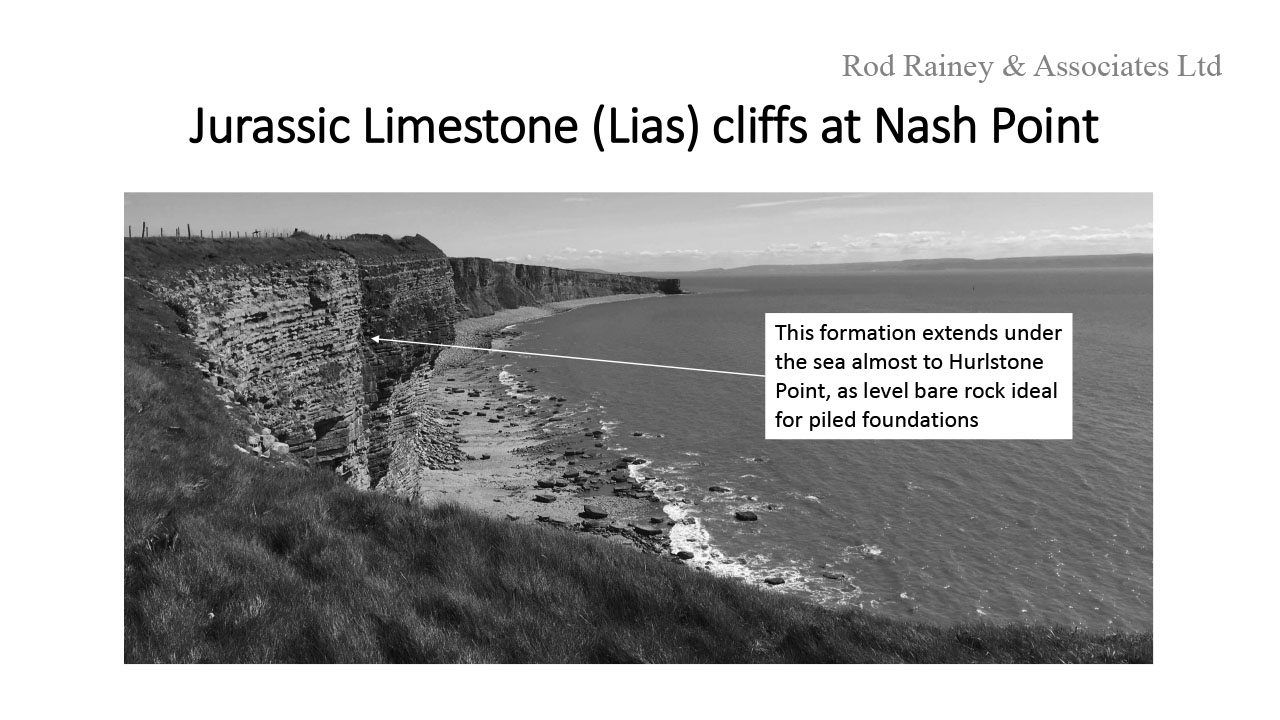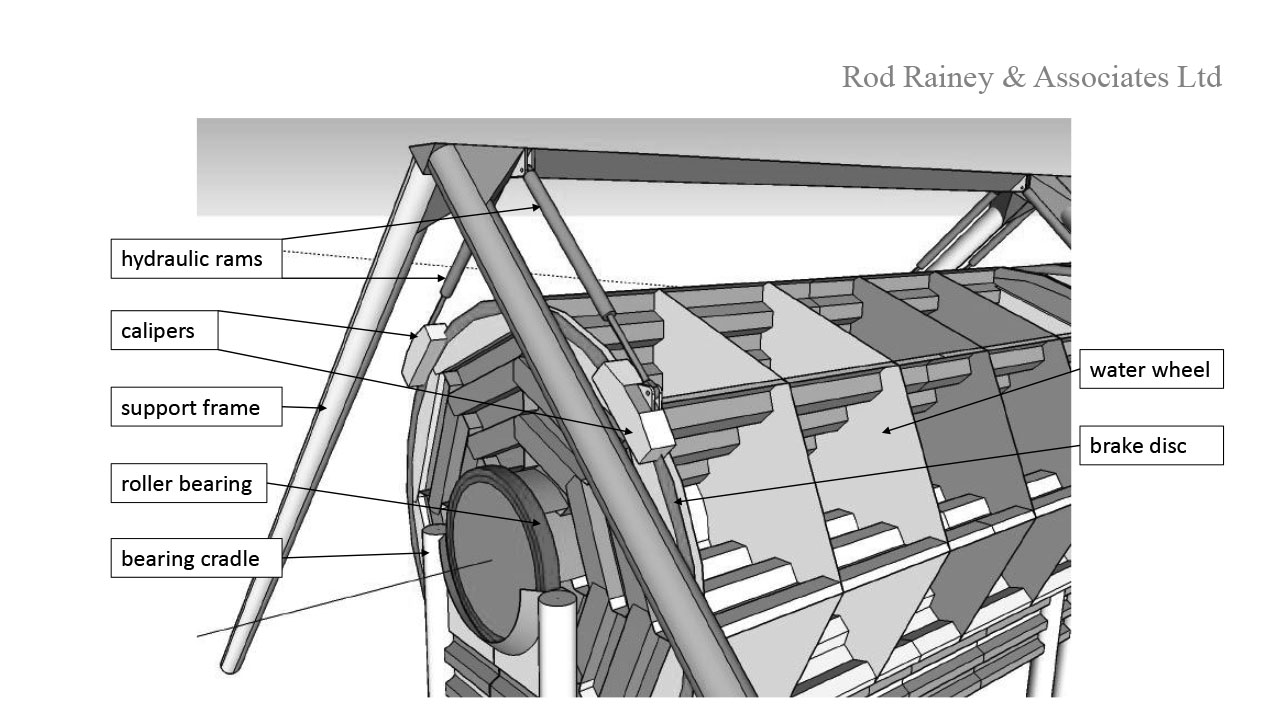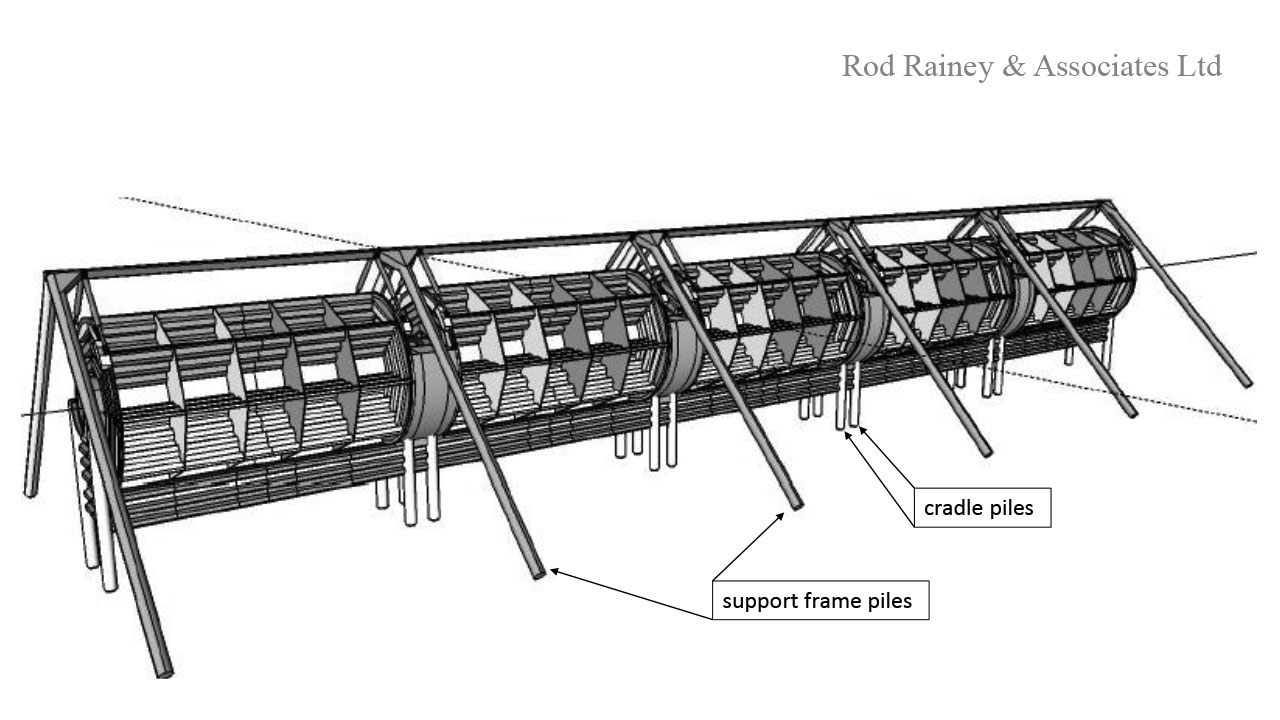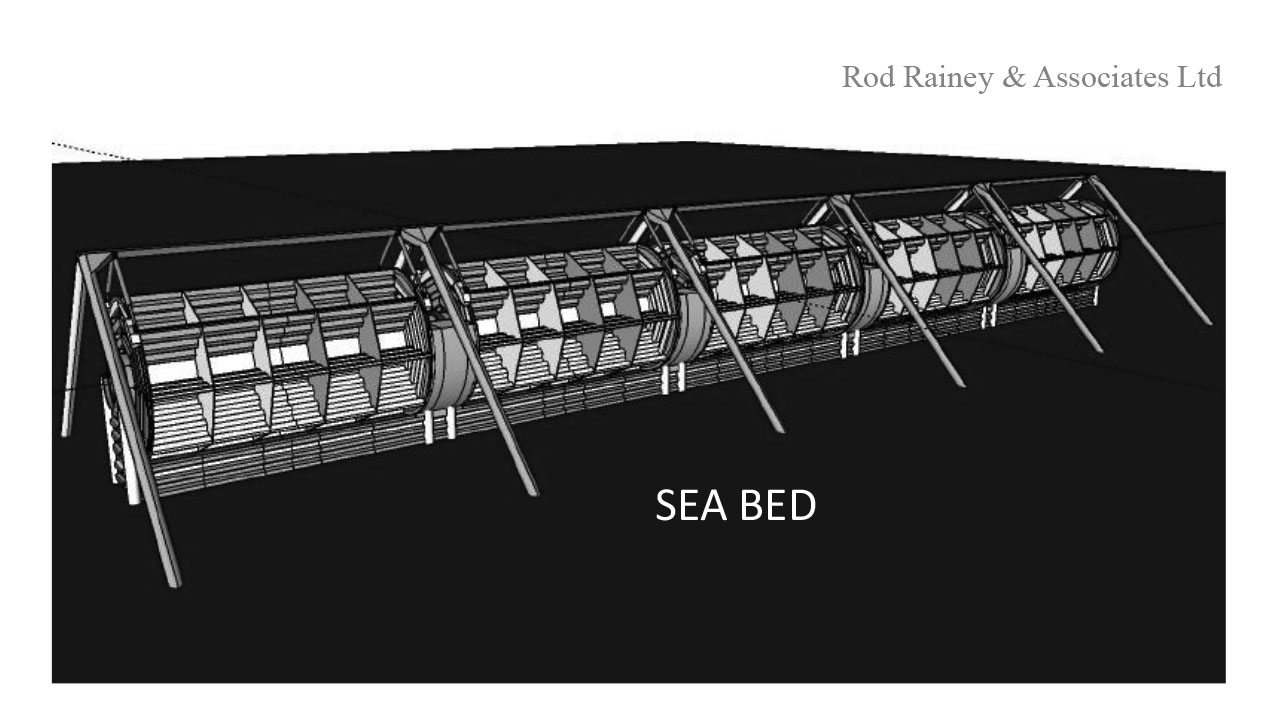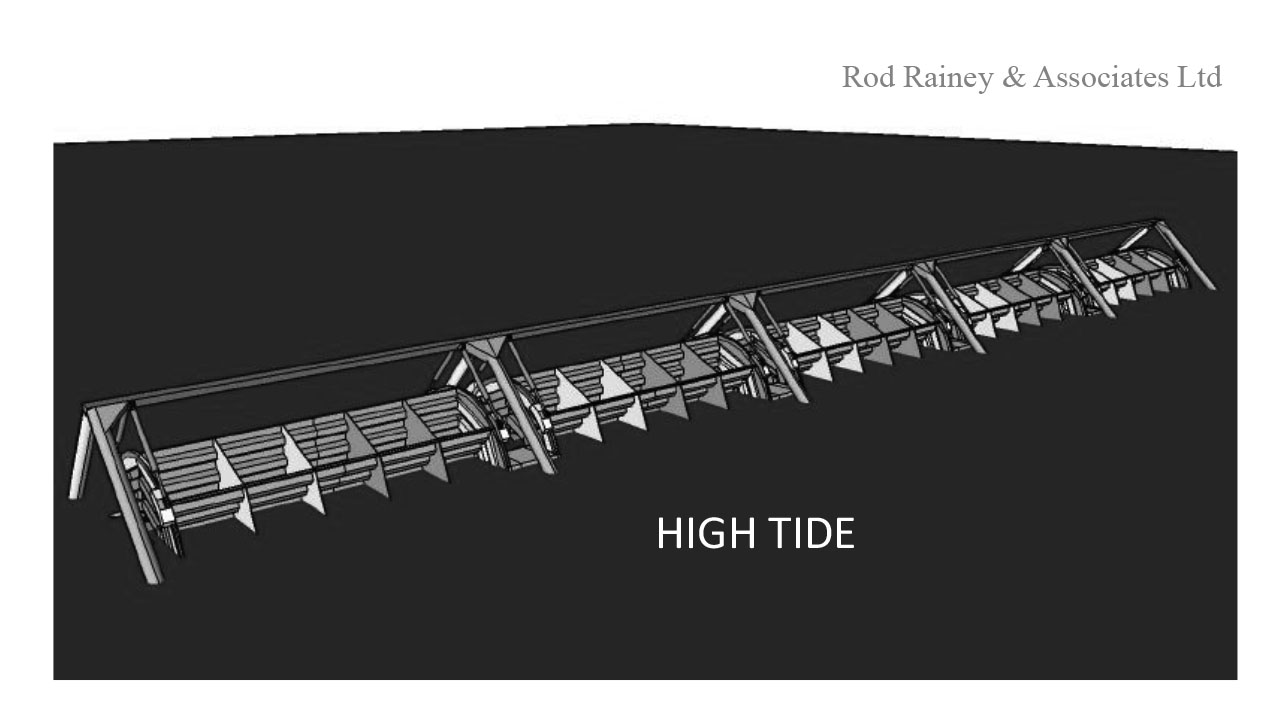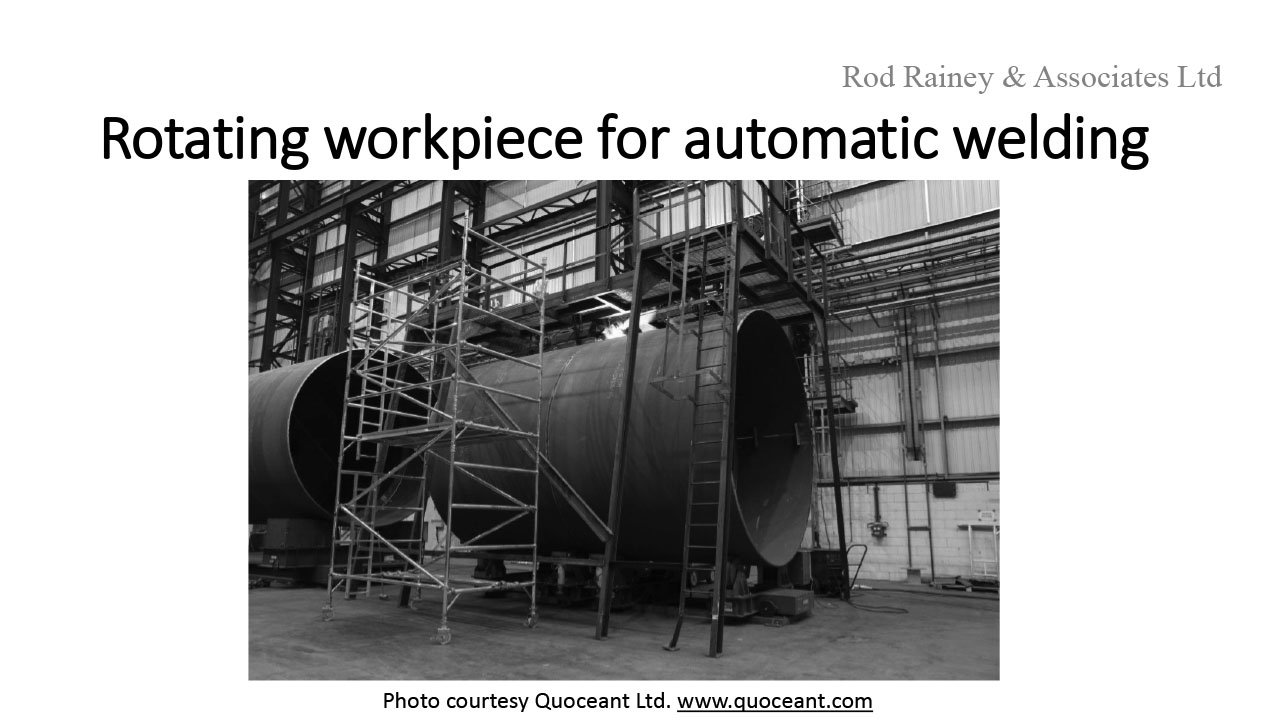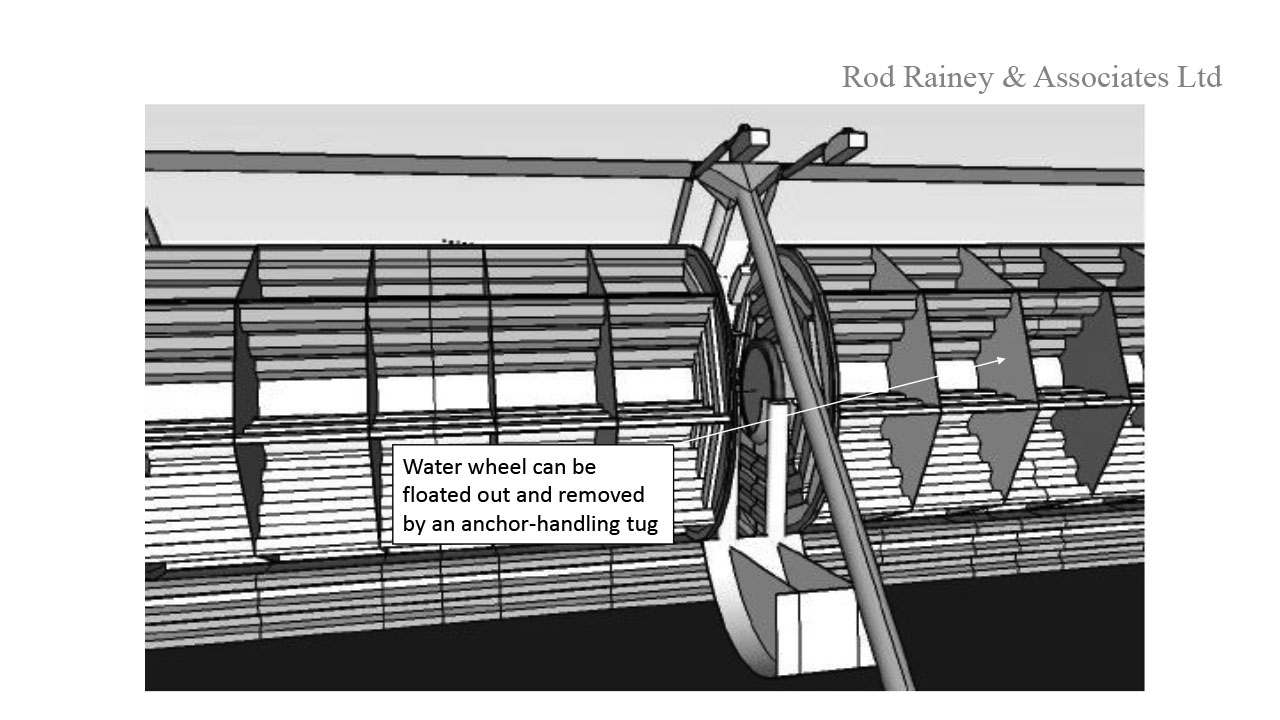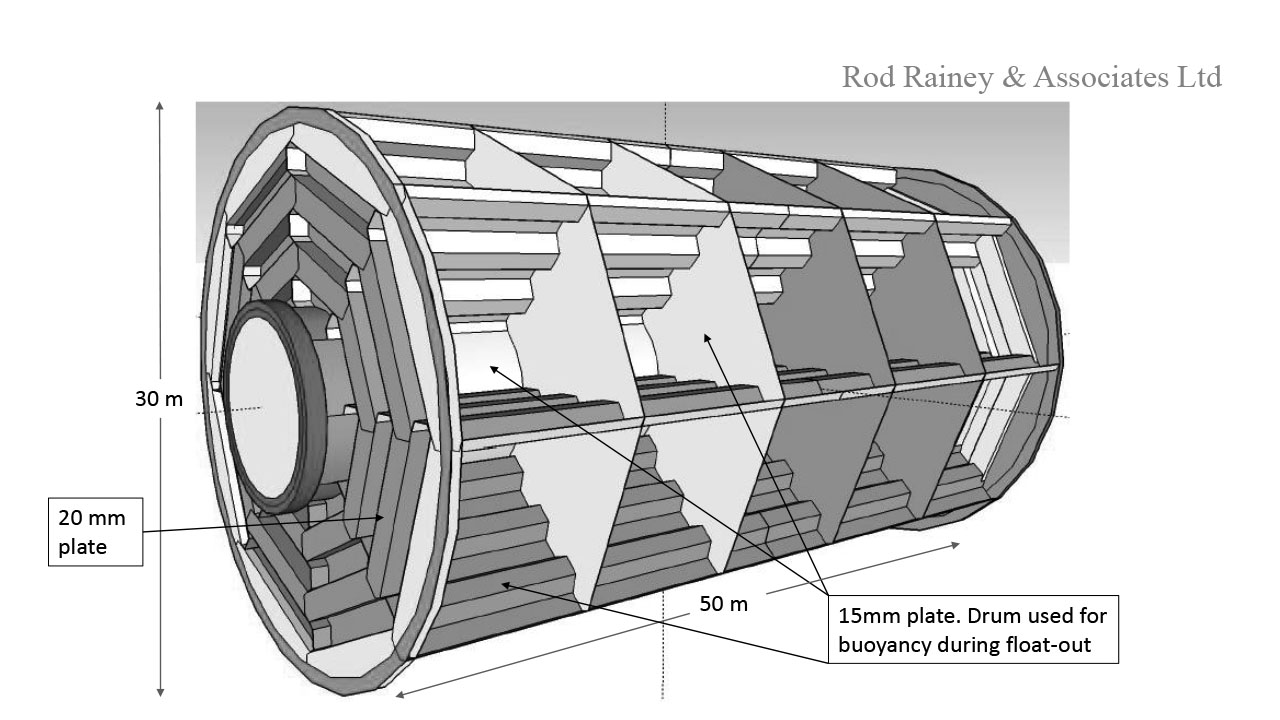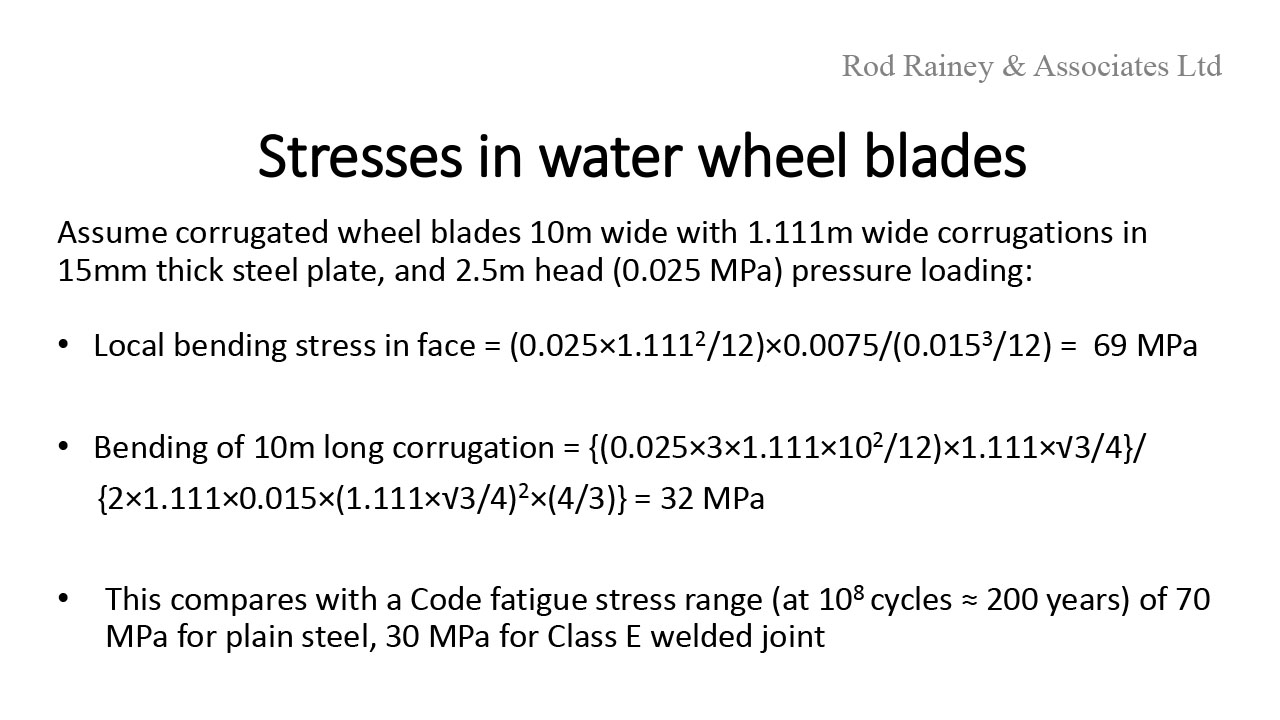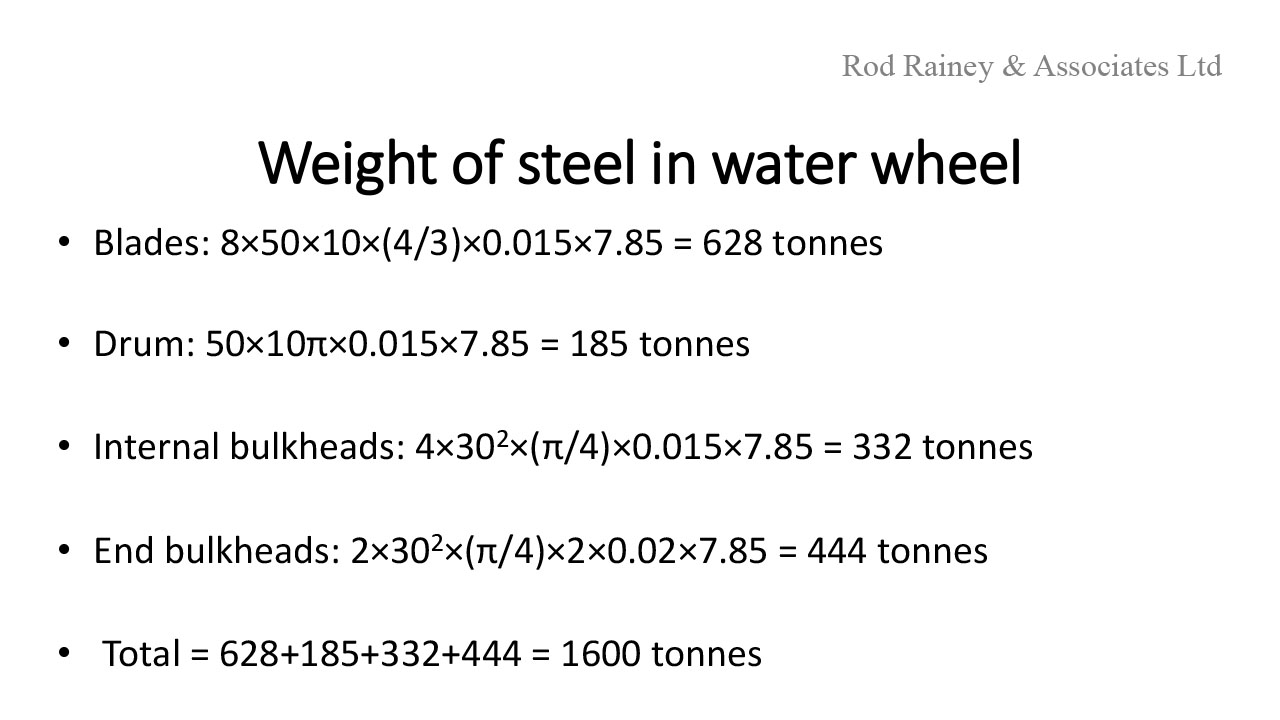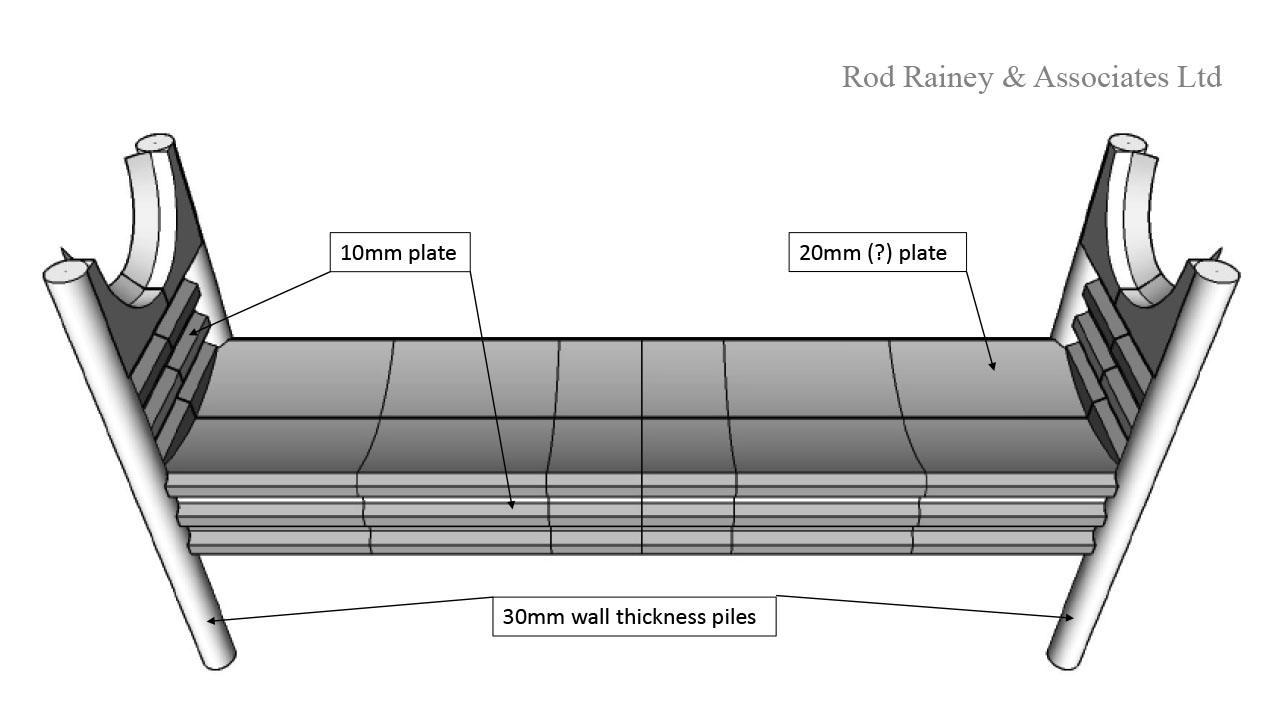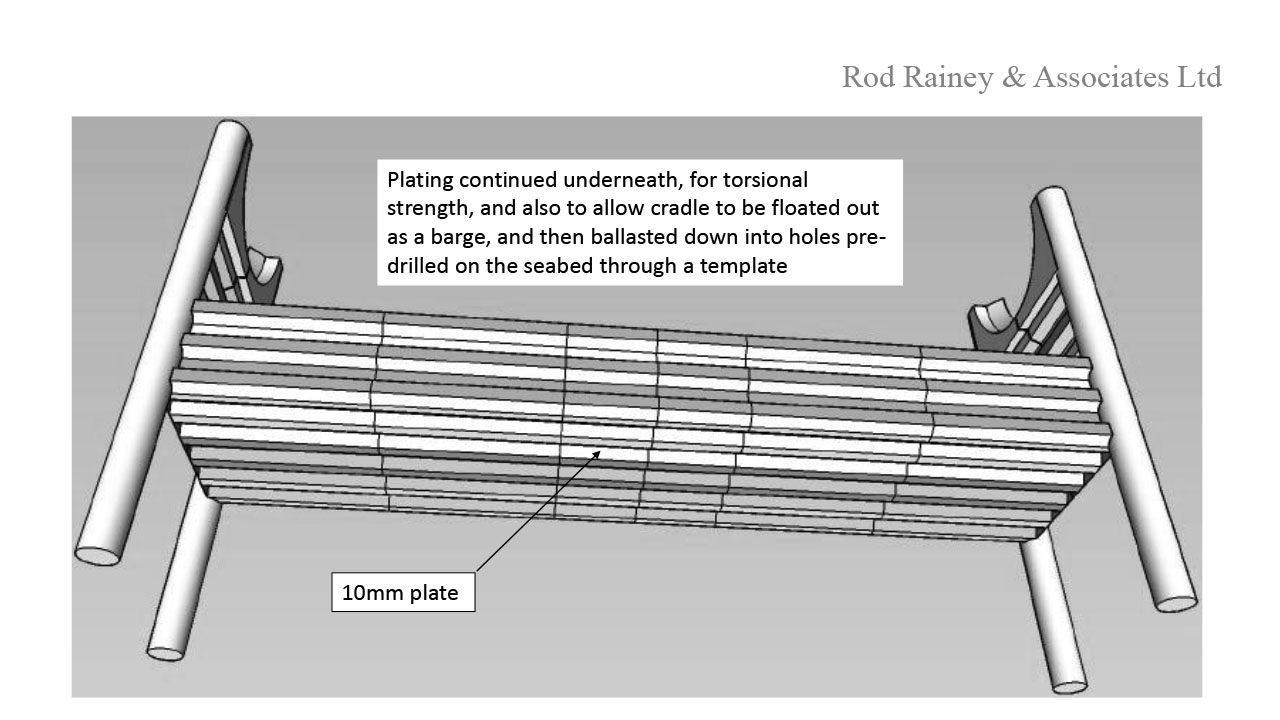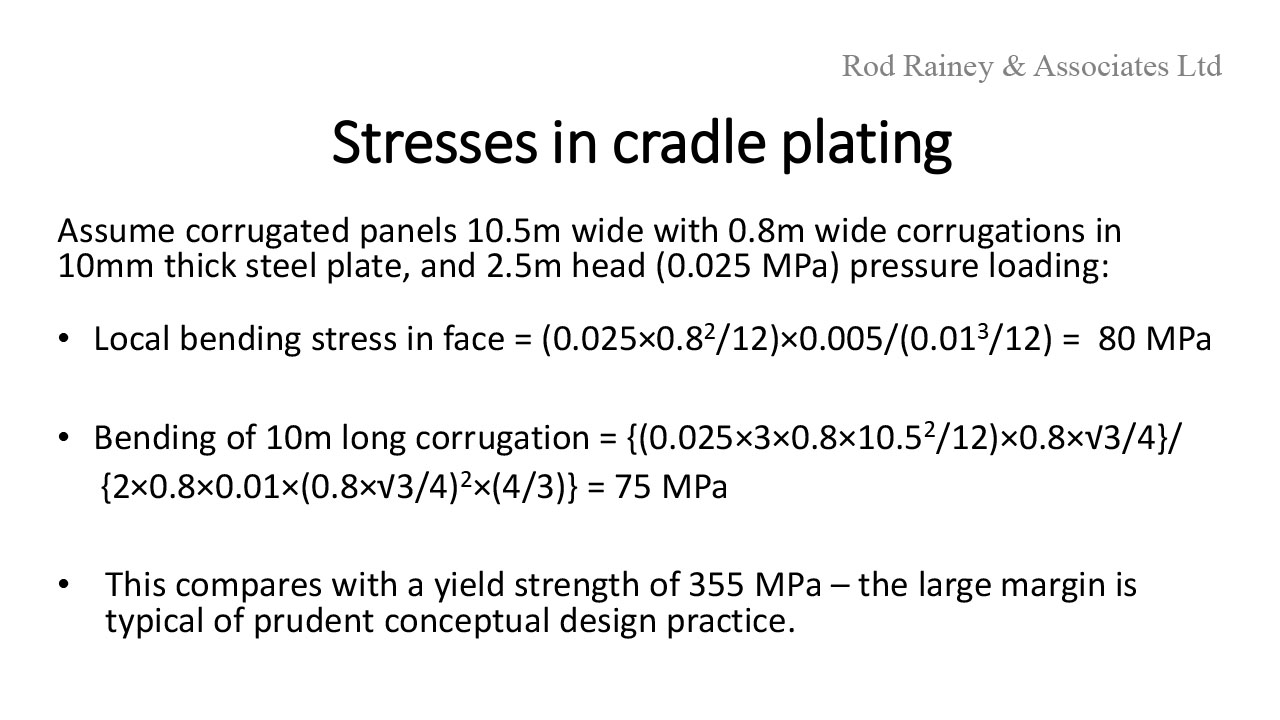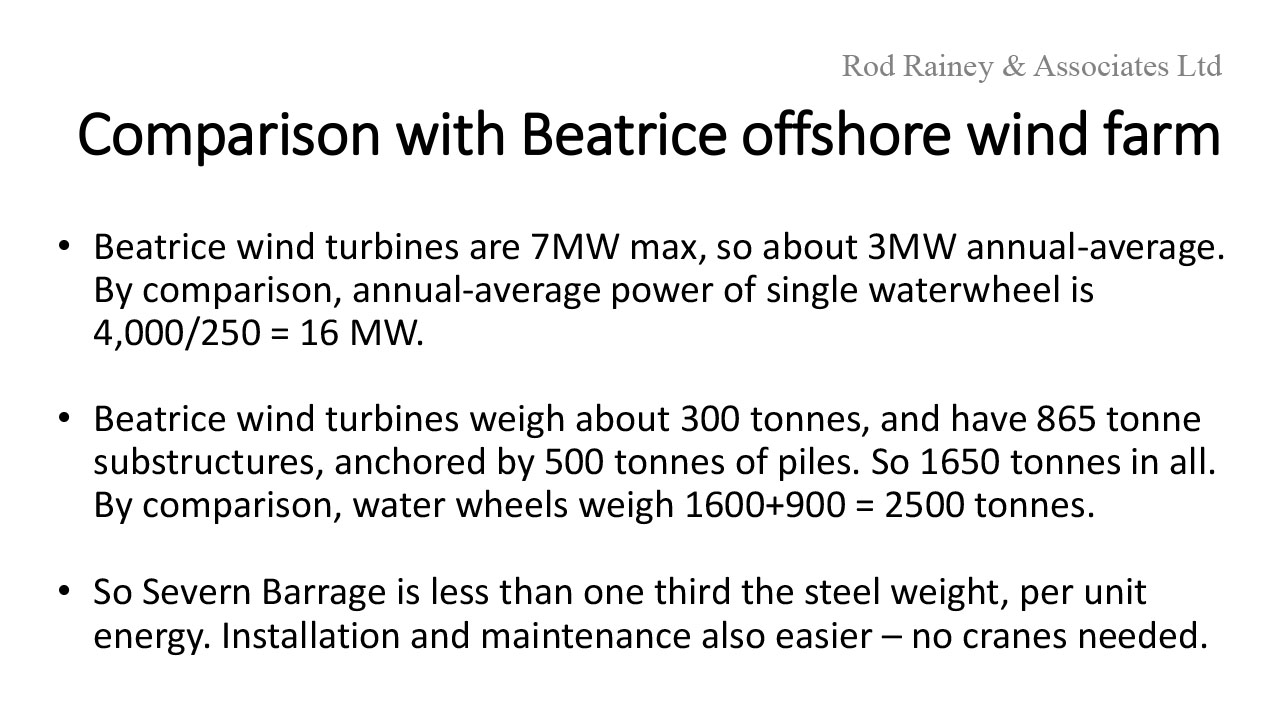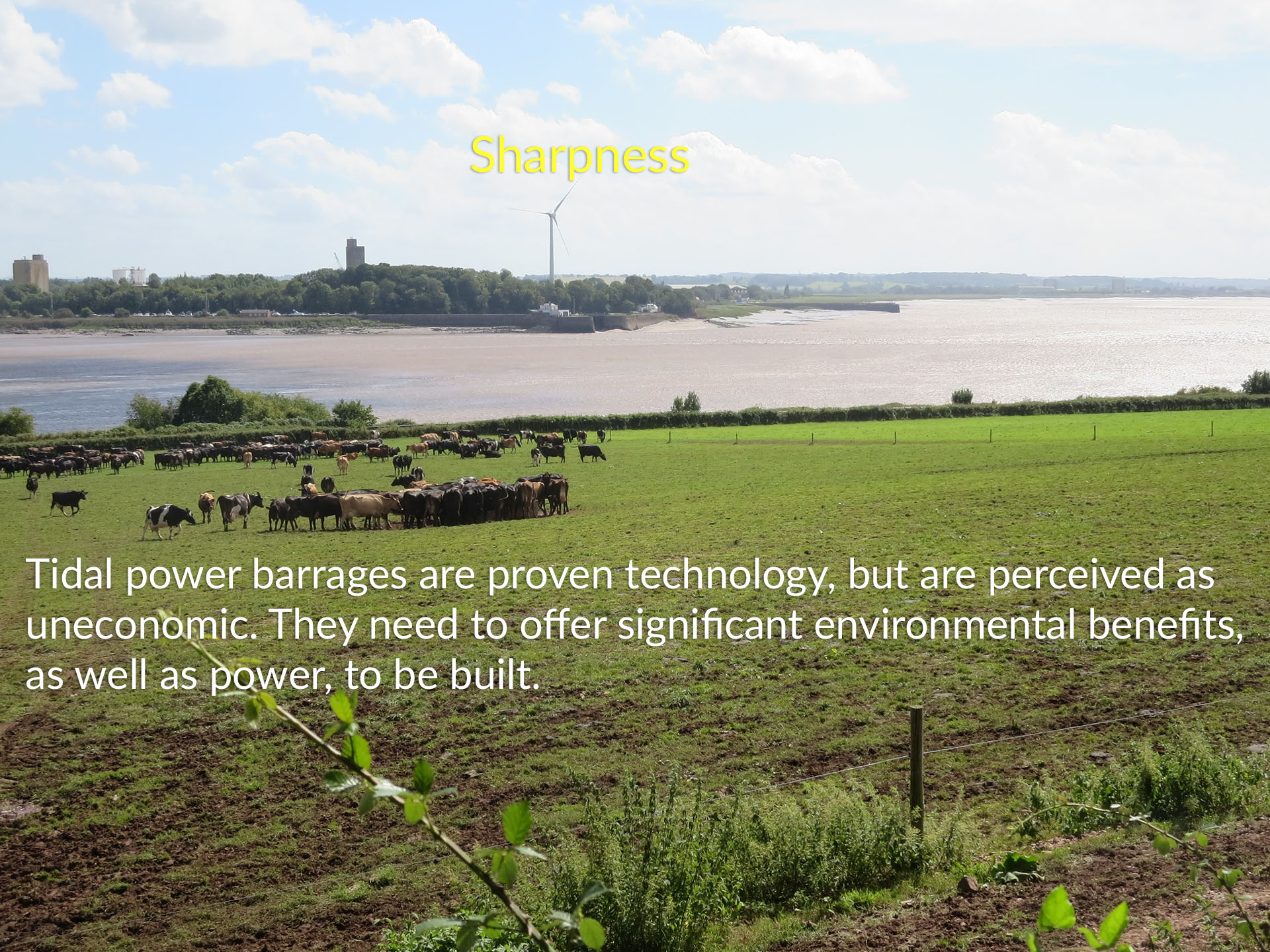
The Sihwa Lake tidal power barrage in South Korea, for example, was primarily built to improve the water quality in the lake. In the Severn estuary in the UK tidal power barrages can be designed primarily to ease the severe flooding problems in the area at times of heavy rainfall. A barrage at Sharpness, in particular, would offer significant flood protection to Gloucester and Tewkesbury. A smaller barrage at the mouth of the Parrett estuary at Burnham-on-Sea would offer significant flood protection to the Somerset Levels.
Such barrages need to be efficient at pumping, because when flooding threatens they would be used to keep the estuary upstream of them continuously at low spring tide levels, speeding the river flow. They can also be built economically in steel, like the Thames barrier, rather than concrete. Such a barrage design, featuring breast-shot water wheels rather than Kaplan turbines, is described in a paper “Lightweight steel tidal power barrages with minimal environmental impact: application to the Severn Barrage” by Rod Rainey, published in January 2018 in the Proceedings of the Royal Society, Vol. A474. There the application is to a very long barrage at Porlock, designed for maximum tidal power. The design is equally applicable to much smaller barrages at Sharpness and Burnham, however – they just have many fewer segments. See the short films and magazine article on https://www.floodeye.uk/floodeye-latest-news.htm
Also shown below are the slides from two lectures given by Rod Rainey in 2017, at Southampton and Bristol Universities.




































